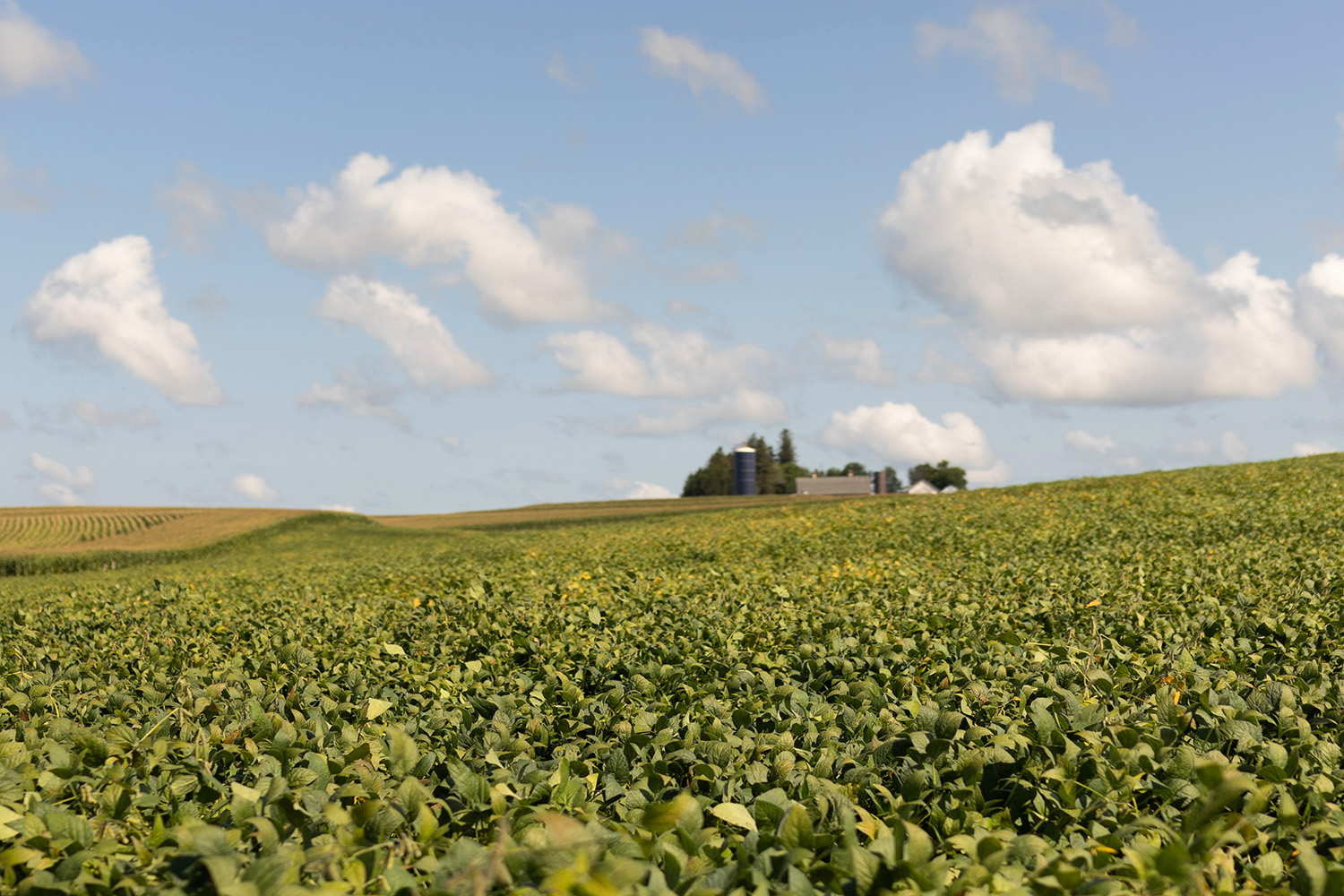
(Photo: Joclyn Bushman/Iowa Soybean Association)
Iowa's cash rental rates increased 10.3% from 2021
October 14, 2022 | Jeff Hutton
For farmers, the bottom line is profitability. But increasing input costs – everything from seed and fertilizer to fuel and equipment – continue to chip away at those profits.
Cash rental rates are also contributing to those increases. In 2022, those rates in Iowa, on average, increased by 10.3% from 2021 – roughly $232 per acre to $256, according to the most recent survey from Iowa State University Extension and Outreach.
It was, according to Alejandro Plastina, associate professor of economics at ISU, the third consecutive and largest uptick in cash rents since 2013, when rents peaked at $270 per acre – a level 5.5% higher in nominal terms than in 2022. By comparison, nominal corn and soybean prices received by Iowa farmers have declined by 16% and 11%, respectively, since mid-2013.
What’s behind the numbers?

According to the opinion survey, which is conducted from March to April each cycle, and then released every May, these numbers over the past year and the past decade is a combination of factors.
“Commodity prices are a definite driver of these cash rental rates,” says Plastina, adding higher government payments, COVID, land prices, and until recently, extremely low interest rates, have “injected a lot of liquidity into the ag sector.”
And with those lower interest rates, typically land values move in the opposite direction, says the ISU professor.
“With interest rates at low levels, it provides support for higher land values,” Plastina says. “Higher land values typically translate into higher cash rental rates.”
And in 2022, those cash rental rates were felt statewide.
“There was considerable variability across counties in year-toyear changes, as is typical of survey data, but 95 out of the 99 Iowa counties experienced increases in average rents for corn and soybeans. Only Buchanan, Davis and Mahaska counties experienced declines in their overall average cash rents, while Black Hawk County experienced no change in average rent,” Plastina says. “Even with the difference in land quality, there was nothing too out of the ordinary,” Plastina says. “All Iowa farmland is valuable and it’s been increasing.”
2023 and beyond
While Plastina was reluctant to make any specific predictions and the current 2023 survey will not be complete until March, the trend of seeing increases in cash rental rates is certainly a real possibility.
“It’s hard to say, but expectations are that we will not be seeing major spikes in interest rates, and that could indicate land values will not decline and cash rents might increase,” he says. “The trend would continue upward, but probably not as fast as we have seen.”
Plastina says survey respondents, especially younger producers as well as established farmers, have indicated they are concerned about cash rental rates, especially since their drop after their peak in 2013 was “much slower than the drop in corn and soybean prices.”
“It’s getting harder and harder for those who don’t own land to begin a farm operation,” he says. “It’s a higher barrier for those farmers.”
Plastina says work on the upcoming Farm Bill may impact cash rental rates.
“I assume, based on recent actions in Congress, there will be more resources to implement conservation practices, such as carbon sequestration,” he says. “The value that could create for farmers is important to both landowners and tenants.
“Any new ways to implement conservation practices that will come out of the farm bill could impact cash rental rates, but it’s too early to tell,” he says. “We probably won’t see any real impact until maybe 2024.”
Plastina says survey information can serve as a reference point for negotiating an appropriate rental rate for next year. However, rents for individual farms should be based on productivity, ease of farming, fertility, drainage, local price patterns, longevity of the lease, conservation practices and services performed by the tenant.
For an overview of the 2022 survey, go to: https://www.extension.iastate.edu/agdm/wholefarm/html/c2-10.html.
Back